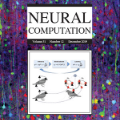We present a theoretical approach to overcome the curse of dimensionality using a neural computation algorithm which can be distributed across several machines. Our modular distributed deep learning paradigm, termed \textit{neural pathways}, can achieve arbitrary accuracy while only loading a small number of parameters into GPU VRAM. Formally, we prove that for every error level $\varepsilon>0$ and every Lipschitz function $f:[0,1]^n\to \mathbb{R}$, one can construct a neural pathways model which uniformly approximates $f$ to $\varepsilon$ accuracy over $[0,1]^n$ while only requiring networks of $\mathcal{O}(\varepsilon^{-1})$ parameters to be loaded in memory and $\mathcal{O}(\varepsilon^{-1}\log(\varepsilon^{-1}))$ to be loaded during the forward pass. This improves the optimal bounds for traditional non-distributed deep learning models, namely ReLU MLPs, which need $\mathcal{O}(\varepsilon^{-n/2})$ parameters to achieve the same accuracy. The only other available deep learning model that breaks the curse of dimensionality is MLPs with super-expressive activation functions. However, we demonstrate that these models have an infinite VC dimension, even with bounded depth and width restrictions, unlike the neural pathways model. This implies that only the latter generalizes. Our analysis is validated experimentally in both regression and classification tasks, demonstrating that our model exhibits superior performance compared to larger centralized benchmarks.
翻译:暂无翻译




